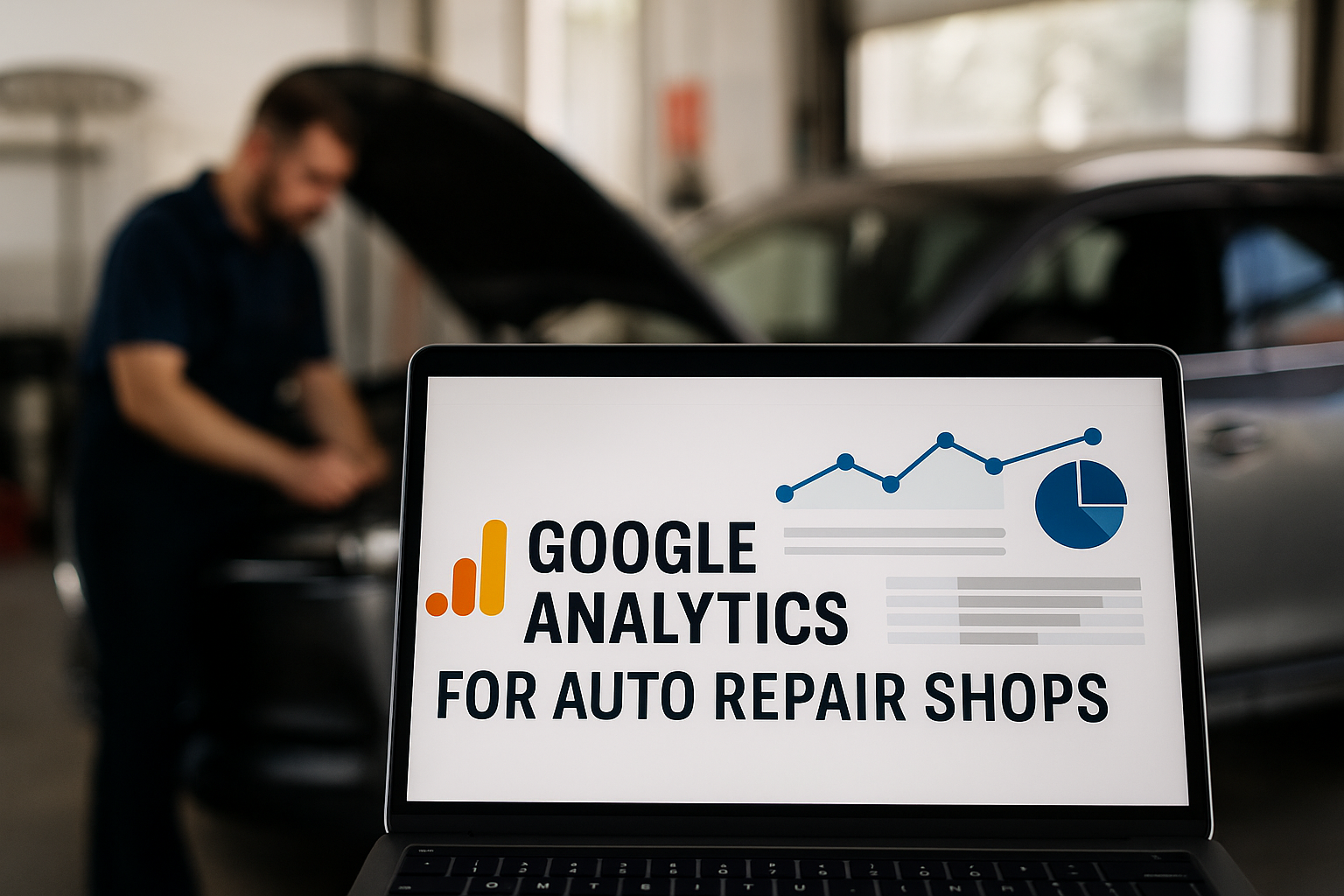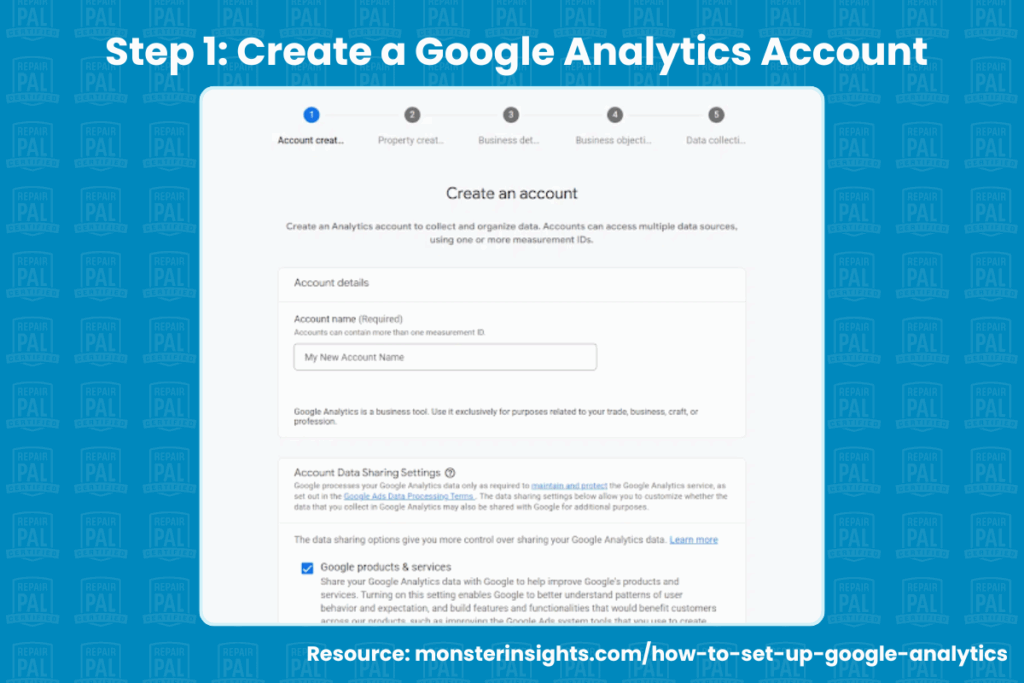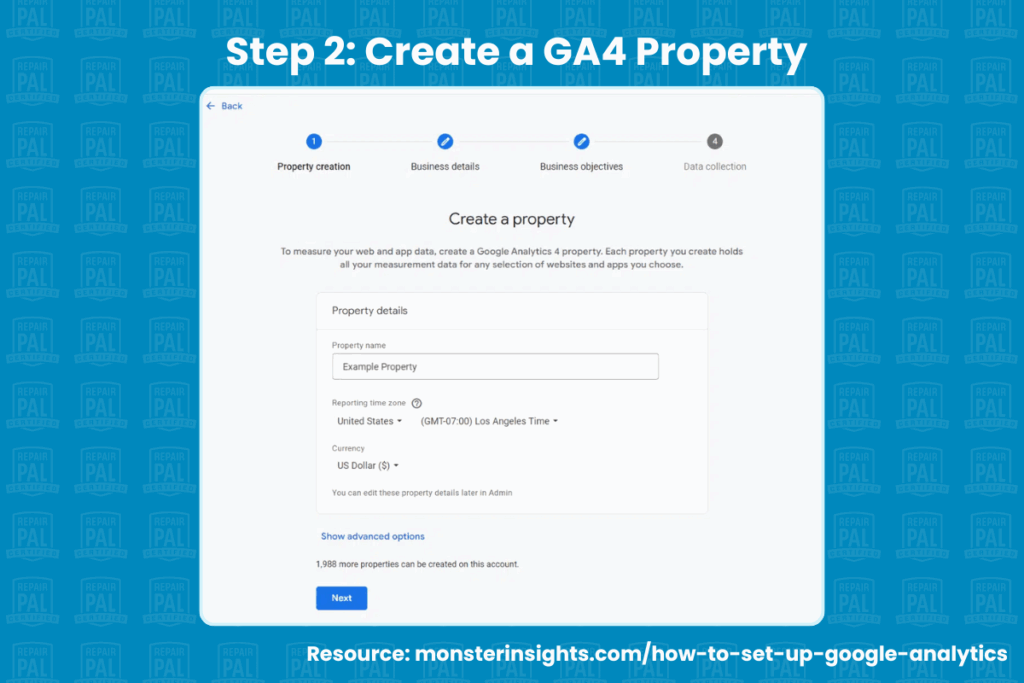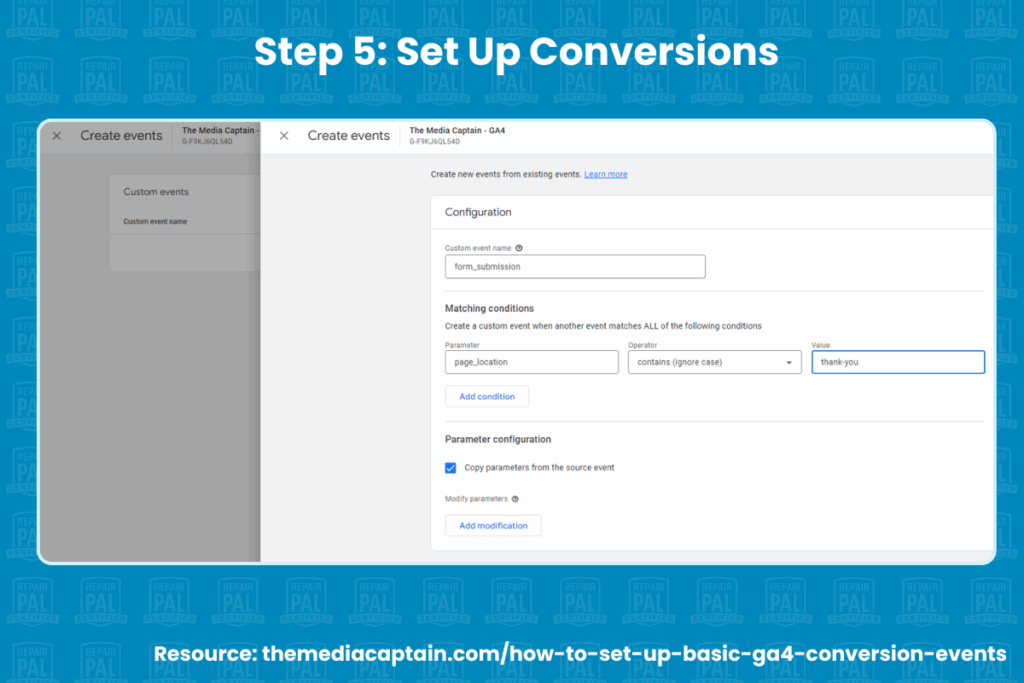Discover how auto repair shops can use Google Analytics to track website traffic, measure performance, and drive more leads with GA4 insights.
Why Google Analytics Matters for Your Shop
You already know that customers aren’t just walking into auto repair shops by accident anymore—they’re searching online first. They’re asking questions like:
- “Best brake repair near me”
- “Oil change specials in [your city]”
- “Trusted mechanic for engine diagnostics”
If your shop shows up in those searches, you’ve got a chance to win that customer. But here’s the real question: How do you know if your website is actually bringing in customers—or if it’s just sitting there?
That’s where Google Analytics (GA4) comes in. Google Analytics is a free tool from Google that tracks what’s happening on your website—like how people find you, which pages they read, and if they book an appointment.
Think of it like a digital service advisor: instead of diagnosing cars, it diagnoses your website’s performance.
Why Should Auto Repair Shops Use Google Analytics?
Running a repair shop is all about making smart decisions: which services to promote, how to keep bays full, and how to build customer trust. Google Analytics helps with the same thing—but for your website.
Here’s why it matters:
- SEO and marketing are guesswork without data.
You wouldn’t recommend a repair without running diagnostics first, right? The same goes for your online marketing. Google Analytics is your diagnostic tool. - It shows how people find your shop.
Did they come from Google search, Facebook, or an ad you paid for? - It helps you measure success.
Are visitors turning into paying customers, or leaving your site before booking? - It’s ongoing, not one-and-done.
Just like cars need regular maintenance, your website performance changes over time. Google Analytics helps you adjust as customer needs, Google’s algorithm, and your own marketing evolve.
What Is Google Analytics?
Google Analytics is a powerful tool that helps businesses (including auto repair shops) track:
- Website traffic (how many people visit your site).
- User behavior (what pages they look at, how long they stay).
- Conversions (calls, appointment bookings, form fills).
By tracking these, you can see what’s working, what’s not, and where to improve.
Step-by-Step: How to Get Started With GA4
Setting up Google Analytics might sound intimidating, but don’t worry—I’ll break it down step by step. Most shop owners can either do this themselves or have their web person set it up in under an hour.
Step 1: Create a Google Analytics Account
- Go to analytics.google.com.
- Sign in with your Google account (the same one you use for Gmail or Google Business Profile).
- Click Admin > Create Account.
- Name it something simple like “My Shop Website Analytics.”
Step 2: Create a GA4 Property
- Under “Admin,” click Create Property.
- Enter your shop name.
- Choose your reporting time zone (U.S.) and currency (USD).
- Select GA4 (Google Analytics 4).
Free Download
Lead Generation Tips for your Repair Shop Business
 Learn more digital marketing strategies with our Free Guide, Lead Generation Tips for Your Repair Business
Learn more digital marketing strategies with our Free Guide, Lead Generation Tips for Your Repair Business
Step 4: Install the Tracking Code
You’ll now get a tracking ID and code. You have two options:
- If you manage your website yourself: Copy the tracking code and paste it into your site’s header.
- If someone else manages it: Send them the code and ask them to install it.
👉 If your site runs on platforms like WordPress, Wix, or Squarespace, most have built-in Google Analytics integrations.
Step 5: Set Up Conversions
Conversions are the actions that matter most to your shop. Examples:
- Clicking the “Call Now” button.
- Booking an appointment online.
- Filling out a contact form.
To set these up:
- In GA4, go to Admin > Conversions > New Conversion Event.
- Choose the event you want to track (like “form_submit” or “phone_click”).
- Save it.
Now you’ll know which visitors actually became potential customers.
Which Metrics Matter Most for Auto Shops?
Once GA4 is running, it collects tons of data. But you don’t need to track everything—just focus on what matters to auto repair shops:
1. Traffic Sources
Where are customers coming from?
- Google search (SEO) – People looking for “auto repair near me.”
- Google Ads or Facebook Ads – Paid marketing campaigns.
- Referrals – Did they come from a partner?
- Direct traffic – Customers typing your website directly.
2. Conversion Rate
If 100 people visit your site and 10 book an appointment, your conversion rate is 10%. A good benchmark for auto repair shops is 5–10%. (Source)
3. Mobile Performance
Since most people search on their phones, check how your site performs on mobile. If visitors bounce (leave quickly), your site might be too slow or hard to use.
4. Local SEO Performance
Track how often your site shows up in local searches like “oil change [city].”
5. Engagement Metrics
These tell you if people are interested:
- Bounce rate – Did they leave after one page?
- Time on site – Are they reading about your services?
- Pages per session – Are they clicking around?
How to Use Analytics to Optimize Your Website
Now comes the fun part: using the data to improve your shop’s marketing.
Reoptimize Existing Content
If your brake repair page gets traffic but no calls, maybe the call-to-action (CTA) isn’t strong enough. Add:
- “Schedule your brake inspection today” button.
- Customer testimonials.
- Local keywords (“Brake repair in Howell, MI”).
Add Blog Content
If you see lots of searches for “winter car maintenance,” write a blog post with tips. That content can bring in new customers each season.
- Example blog you could write: “5 Winter Maintenance Tips Every New York Driver Should Know.”
Improve Technical SEO
Check if your site loads in under 3 seconds. If not, ask your web provider to compress images or upgrade hosting.
Test Landing Pages
Try two different versions of your appointment page. GA4 will show which one brings more bookings.
Integrate With Google Ads
Running paid ads? GA4 shows which ones bring real customers versus clicks that don’t convert.
Where Google Analytics Fits Into Shop Marketing
Think of Google Analytics as the hub of all your marketing. It connects the dots between:
- Local SEO & Google Business Profile – See how many calls you get from map searches.
- Paid Ads – Measure if your Google Ads or Facebook campaigns are paying off.
- Email Marketing – Track how many customers click through newsletters.
- Customer Reviews & Referrals – Watch referral traffic from Google, Partner Websites, or RepairPal.
- RepairPal Network – Many shops in our Certified Network use GA4 to track leads and confirm ROI.
How Shops Use GA4 to Measure Results
Let’s say “Mike’s Auto Repair” in New Jersey sets up GA4. After one month, here’s what they find:
- 400 visitors came to the website.
- 60% came from Google search.
- 20% came from Facebook ads.
- 10% came directly (typing the URL to your website).
- 30 people booked online appointments.
Lessons learned:
- His SEO is strong (Google search brings the most traffic).
- Facebook ads are expensive but not driving many conversions.
- His appointment booking system works (conversion rate = 7.5%).
Based on this, Mike decides to:
- Invest more in SEO.
- Reduce Facebook ad spend.
- Add another CTA to boost bookings further.
FAQs
Because it shows you where customers come from, what they do on your site, and if they’re booking services.
It’s the newest version of Google Analytics, designed to track customer journeys across devices and give clearer insights.
Traffic sources, conversion rate, mobile performance, and engagement.
If you’re getting calls, bookings, and repeat visitors, it’s working. If not, GA4 will tell you where to fix it.
Just like you wouldn’t work on a car without running diagnostics first, you shouldn’t run your shop’s marketing without knowing how your website is performing.
Google Analytics gives you the tools to:
- Attract more customers.
- Track bookings and leads.
- Improve customer satisfaction.
- Make smarter, data-driven decisions.






